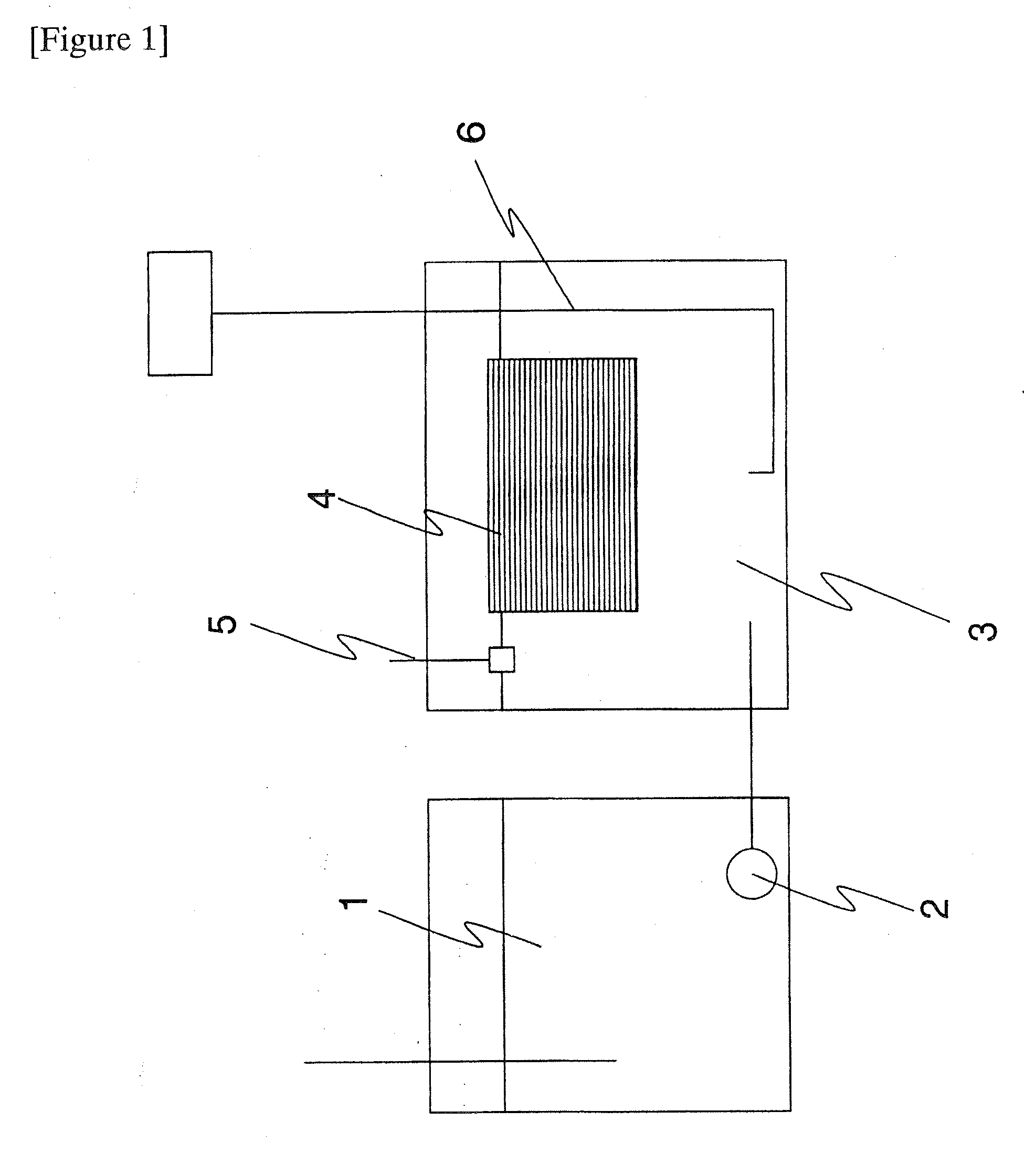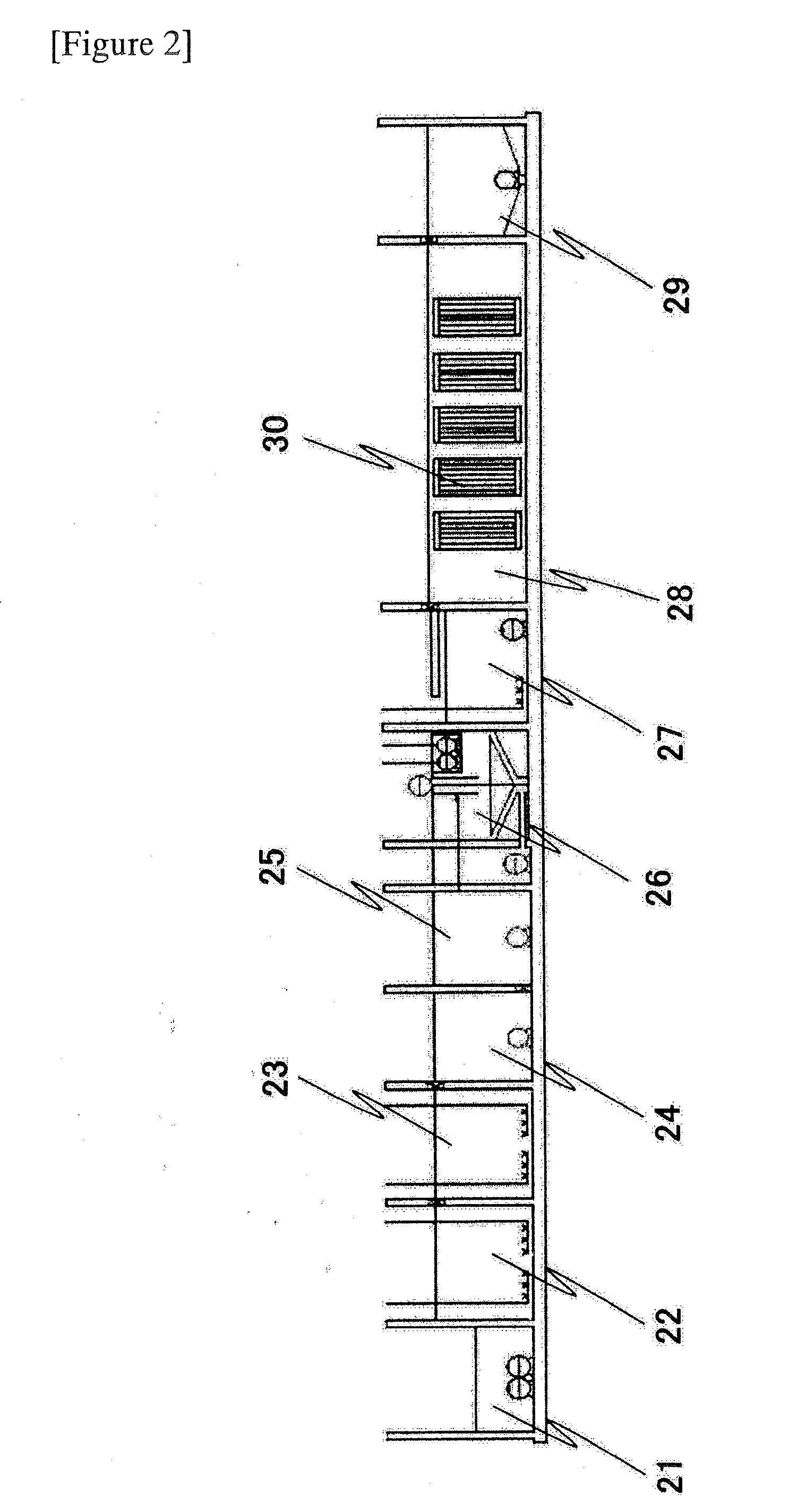Method of treating wastewater containing organic compound
- Summary
- Abstract
- Description
- Claims
- Application Information
AI Technical Summary
Benefits of technology
Problems solved by technology
Method used
Image
Examples
example 1
[0116]A degreasing agent-containing waste liquid discharged from plating factories and printed factories was treated using an activated sludge as follows.
[0117]Here, the degreasing agent-containing waste liquid contained at least dipropylene glycol ether, an alkylbenzimidazole, a benzimidazole derivative, diethylene glycol monobutyl ether, monoethanolamine, a polyoctyl phenyl ether, isopropyl alcohol, ethylene glycol, N,N′-dimethylformamide, or the like.
[0118]In addition, the biochemical oxygen demand (BOD), the chemical oxygen demand (COD), the total nitrogen content, and the total phosphorus content were respectively determined for the degreasing agent-containing waste liquid. The BOD was obtained by measuring an amount of dissolved oxygen in a sample after 5 days of culture and an amount of dissolved oxygen in a sample before the culture using a product under the trade name of DO meter OM 12 (manufactured by HORIBA, Ltd.), and calculating the BOD on the bases of the numerical val...
example 2
[0145]The isolated IBI-2P, IBI-3P, IBI-6P, IBI-15P, IBI-40P, and IBI-6 were separately cultured. Next, the degreasing agent-containing waste liquid was treated in the same manner except that each of the resulting IBI-2P, IBI-3P, IBI-6P, IBI-15P, IBI-40P, and IBI-6 was used in place of the activated sludge in the above EXAMPLE 1.
[0146]As a result, after one week, a treated water satisfying the standards for sewage release (BOD: 130 ppm, COD: 245 ppm, total nitrogen: 75 ppm, and total phosphorus: 15 ppm) at a residence time of 42 hours was obtained. Here, the existing ratio of the above IBI-2P to IBI-3P to IBI-6P to IBI-15P to IBI-40P to IBI-6 (ratio of cell count) was almost 1:1:1:1:1:1, so that the existing ratio was stabilized so that the fluctuations by the degreasing agent-containing waste water was 20 to 50 or so for IBI-2P, and 1 to 10 or so for each of the above IBI-3P, IBI-6P, IBI-15P and IBI-40P, based on 100 for IBI-6.
example 3
[0149]A degreasing agent-containing waste liquid discharged from plating factories and printed factories was treated using an activated sludge as follows.
[0150]Here, the degreasing agent-containing waste liquid mentioned above contained at least dipropylene glycol ether, an alkylbenzimidazole, a benzimidazole derivative, diethylene glycol monobutyl ether, monoethanolamine, a polyoctyl phenyl ether, isopropyl alcohol, ethylene glycol, N,N′-dimethylformamide, ethylene glycol, Or the like. In addition, the biochemical oxygen demand (BOD), the chemical oxygen demand (COD), the total nitrogen content, and the total phosphorus content were respectively determined for the above degreasing agent-containing waste liquid. The above BOD was obtained by measuring an amount of dissolved oxygen in a sample after 5 days of culture and an amount of dissolved oxygen in a sample before the culture using a product under the trade name of DO meter OM 12 (manufactured by HORIBA, Ltd.), and calculating t...
PUM
| Property | Measurement | Unit |
|---|---|---|
| Temperature | aaaaa | aaaaa |
| Angle | aaaaa | aaaaa |
| Density | aaaaa | aaaaa |
Abstract
Description
Claims
Application Information
 Login to View More
Login to View More - R&D
- Intellectual Property
- Life Sciences
- Materials
- Tech Scout
- Unparalleled Data Quality
- Higher Quality Content
- 60% Fewer Hallucinations
Browse by: Latest US Patents, China's latest patents, Technical Efficacy Thesaurus, Application Domain, Technology Topic, Popular Technical Reports.
© 2025 PatSnap. All rights reserved.Legal|Privacy policy|Modern Slavery Act Transparency Statement|Sitemap|About US| Contact US: help@patsnap.com



